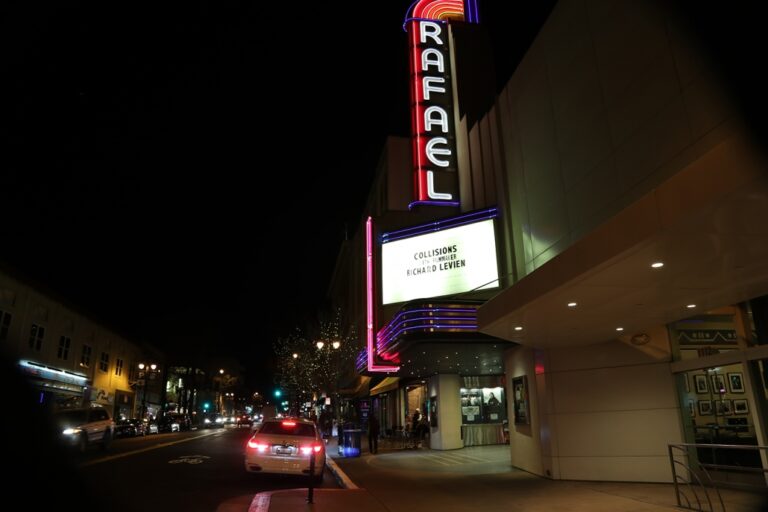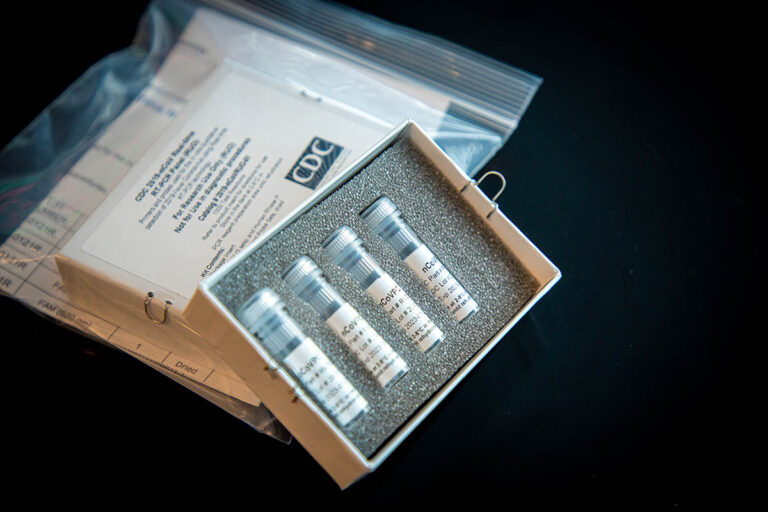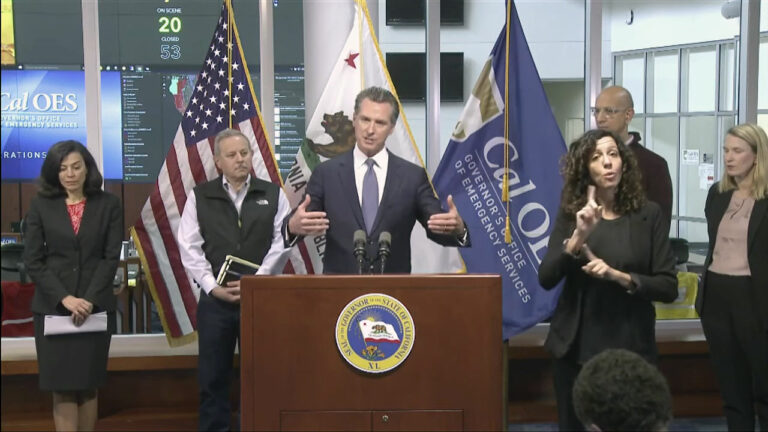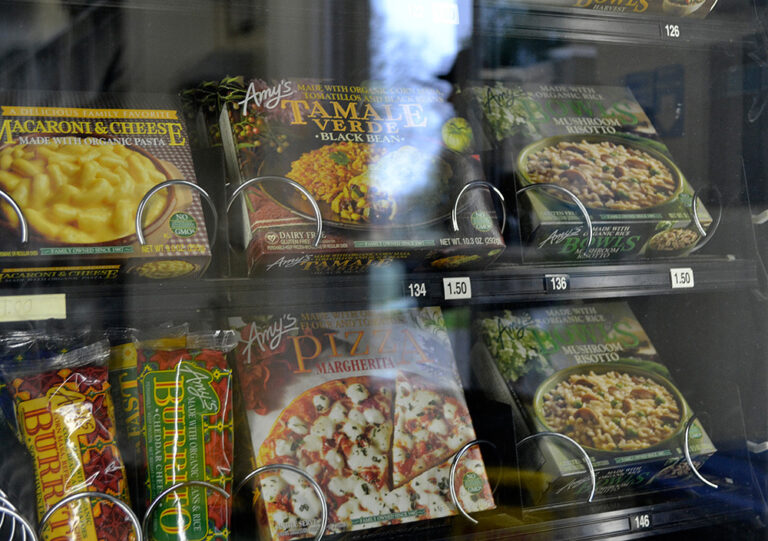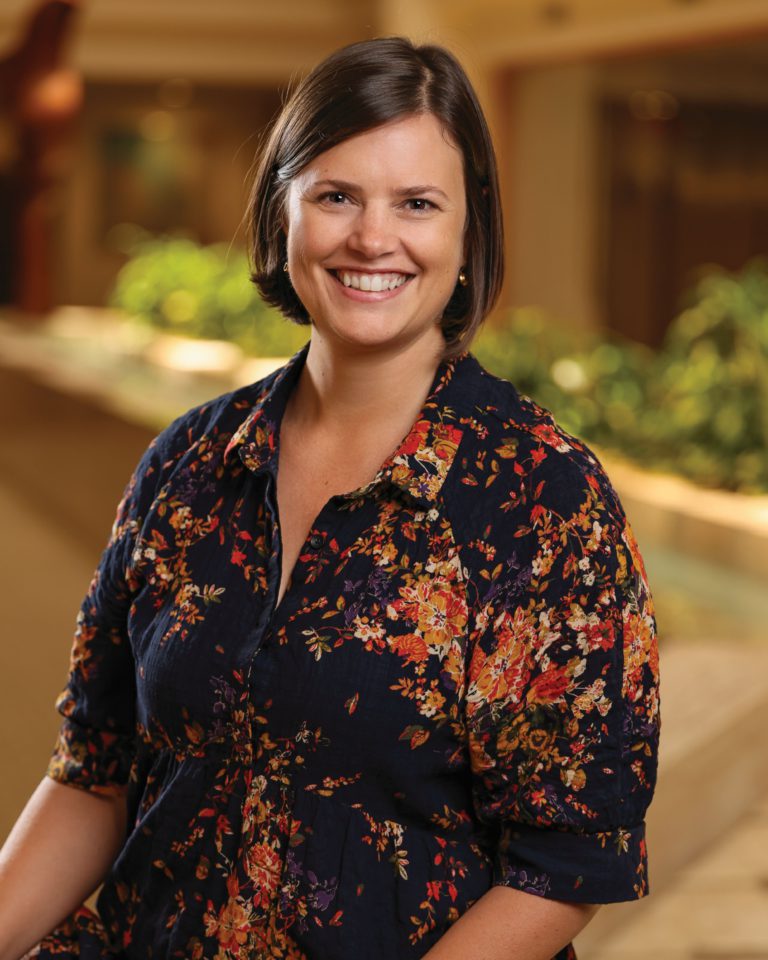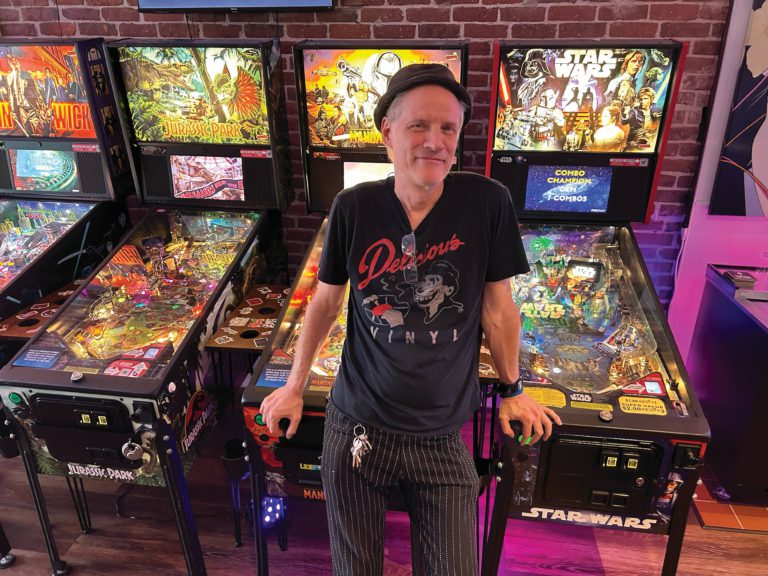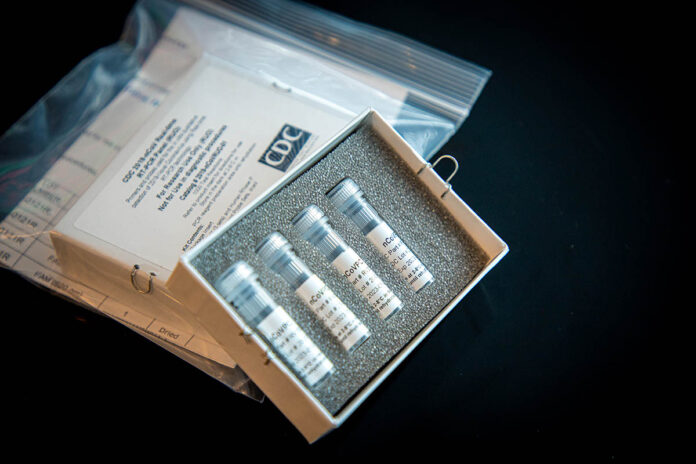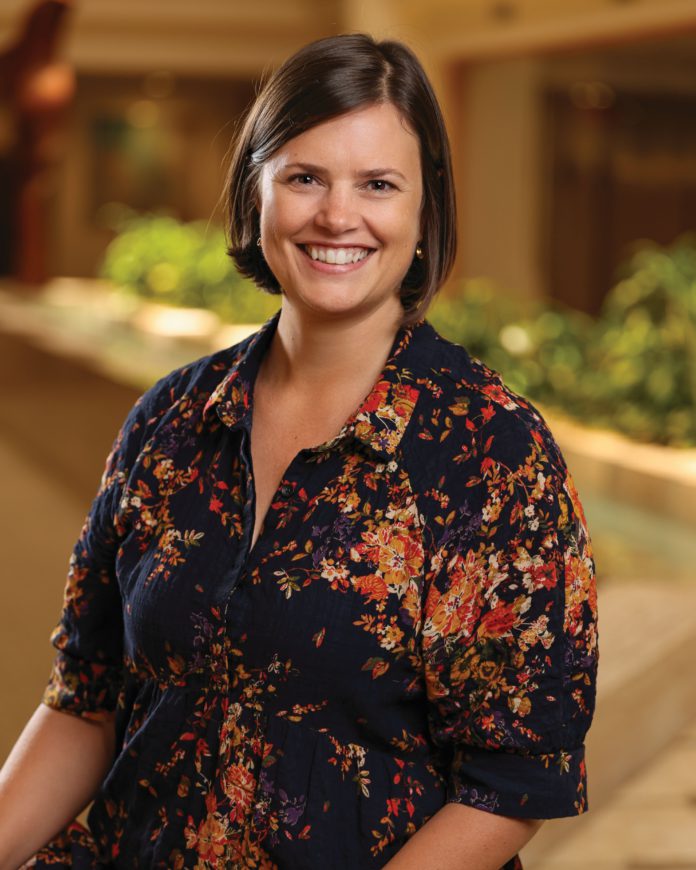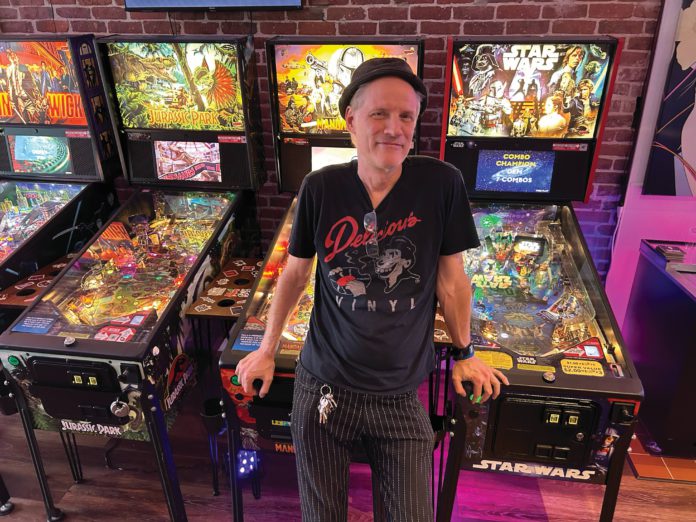Like any typical chump, I planned to start an ambitious new diet on New Year’s Day. Fine, the day after New Year’s Day.
The diet was strict, but had just one simple rule: Eat food, mostly frozen, as much as I want, on a $100 per week budget. And here’s the kicker: Eat only food that’s made by Amy’s Kitchen, the privately held natural foods manufacturer based in Petaluma. Yes, it was a bold plan.
Day 1: I load a frozen, gluten-free tofu scramble breakfast wrap in the microwave oven, starting the day’s calorie count at 300. At lunch it’s a chili mac bowl, 420 calories, and later a spinach pizza pocket sandwich, 280 calories. Dinner brings a longtime favorite to the table; veggie loaf with mashed potatoes, peas, and carrots. But those 340 calories don’t feel like enough, so I round out the evening with a spinach pizza snack, and 380 additional calories.
Day 2: I’m a little hungover. Ugh, what happened?
The Perils of a Cruelty-Free Diet
I’m on this diet partly to see if man can live on Amy’s alone. While it’s a controlled experiment, it’s not an inhumane experiment, so I did not forswear the enjoyment of a few glasses of wine with dinner, before dinner, or after dinner. Besides, eliminating the beverage variable might have skewed the results, right? Instead, I opt for certified organic wine, in the spirit of Amy’s Kitchen, whose listed ingredients are nearly all prefaced with “organic,” save the sea salt and black pepper.
The problem: after unpacking five frozen meals from five cardboard cartons, I’d only packed in 1,720 calories on that first day. No doubt the wine hit a little harder because that’s well below the 2,000 daily calories that nutrition labels are based on, or the recommended 2,400 calorie diet of a moderately active male of my age, and weight.
Ah, that weight. The other reason for the diet was to lose a little of it. I demur from saying what that weight is, lest some readers then wish to knock me around a bit, but suffice it to say that I feel like the image of some kind of corpulent, late career Orson Welles. (More like Audrey Hepburn, remarked a more portly friend a few years back. That smarts a bit, but then again—such style!) What’s that about body image self-acceptance? Stuff self-acceptance in a cheeseburger. I demand to get back that flat belly that I haven’t seen since age 29, and I’ll try any diet in that service. The allure of Amy’s is the quick and easy calorie counting, printed right on the box, and de facto portion control. The convenience of simply reheating frozen food, too, leaves more time for that moderate activity.
Lesson learned, on to Day 2: Country bake breakfast, 420 calories; veggie sausage, 55 calories; brown rice and vegetables bowl, 260 calories; meatless Italian sausage, mushroom and olive pizza, 930 calories. Yes, I know the pizza is supposed to be three separate servings, but the day’s total is only 1,665 calories. Yet I feel stuffed. Might be because I’m not used to consuming so many carbohydrates (see the surprise tally at the end of the article), and that’s a criticism I’ve heard of products like Amy’s: organic or not, isn’t it too high in sodium, too stuffed with carbohydrates, like other processed snack foods? When I announced my dietary goal to someone at the company (who shan’t be named), in fact, the response was: “But what about vegetables?”
In an era when consumers are being advised to eat whole foods, and lower on the food chain, Amy’s occupies an interesting space in between the good reputation of organic foods and the bad rap on processed foods. Frozen foods have taken some heat since the “TV dinner” days of my childhood, when, notwithstanding mom’s cooking being the best, it was a special treat to have those tin foil tray dinners once a week. Meanwhile, Amy’s Kitchen, launched by Rachel and Andy Berliner in 1987 (the original conceit was that they couldn’t find any time-saving convenience foods that were of homemade quality, after the birth of their daughter, Amy, who is now a co-owner in the company), has puffed up from one pot pie sold in what used to be called “health food” stores in Northern California and Oregon, to 260 products sold in megastores the likes of Target, in 29 countries. Revenue in 2017 totaled $500 million.
Can they stay true to home-cooked ideals at such a scale? I’ve got to get behind the kale curtain, and see how the organic tofu sausage is made.
Amy’s, Can You Hear Me?
Day 3: I’ve had no luck trying to contact the public relations desk at Amy’s, so, fueled only by their breakfast scramble, 360 calories, and veggie sausage, 55 calories, I set out by bicycle for the company headquarters in Petaluma. Am I helping to offset the carbon footprint of these packaged meals, or is their economy of scale inherently more efficient than my home stovetop? Will there someday be fewer veal crates, like the ones that I’m passing by on Stony Point Road, because of vegetarian options like Amy’s provides? These are things I think of on my ride. Besides that biking in heavy traffic sucks veggie meatballs.
It wasn’t enough. On Lakeville Highway, a few blocks short, and fatigued, I have to turn back or else miss the last SMART train back to Santa Rosa until late afternoon.
Breakthrough at the Drive-Thru
I get a new idea on the train, remembering the Amy’s Drive-Thru restaurant in Rohnert Park. It’s a long shot, but at the very least, after ordering a single veggie cheeseburger and fries (alas, I am not asked to “super-size” my order to the signature double patty “Amy” burger), I can ask for any kind of help at the register. I’m in luck—Dave Wolfgram, president of Amy’s Drive-Thru Restaurants, is working on his laptop a few tables over. He seems genuinely concerned and promises to hook me up with HQ.
Although this joint is as bustling as it was on my first visit over three years ago (“Understanding Amy’s,” Sept. 9, 2015), Amy’s has rolled out their takeover of the fast food nation at, well, an organic pace. An outpost in SFO (Amy’s “fly-thru”?) is scheduled for July, with a Corte Madera drive-thru opening in 2020.
How the Organic Tofu Sausage is Made
I’m in! I meet Paul Schiefer for a tour of Amy’s flagship production facility, which has been located on Santa Rosa’s Northpoint Parkway since the early days. Schiefer, who is a nephew to the Berliners, grew up with the business, and is now senior director of sustainability.
On the way to the dressing room where I’ll don a smock, hairnet and beard net, I’m already distracted by a novel sight: two vending machines in the break room are stocked with Amy’s entrées. They’re sold to employees for just $1 to $1.50. But the Blue Sky organic cola in the adjacent vending machine, Schiefer admits, isn’t as popular with employees as Pepsi. No strict diets here: there’s a Frito-Lay option, too.
Workers are everywhere on the plant floor, monitoring computer screens, carting multi-level tray carts here and there. Look, there goes my old friend, the lentil loaf! Over there, veggie sausage, destined for a country bake. In one room, which is as big as most winery cellars I see, pinto beans cascade in an industrial waterfall, while a worker tends to a steaming kettle perched high in the middle distance.
A smaller room houses one of the largest tofu making facilities on the West Coast, according to Schiefer. Here are whole soybeans, soaked and removed of fiber, which goes to a dairy. Then, hot soy milk pours forth, and further down the line, blocks of fresh tofu, some 9,400 pounds per day, are cut and sent on to their rendezvous with organic oats, organic bulgar wheat and organic onions and more to, yes, make the tofu sausage.
On the kettle deck, an enchilada sauce has just been made—we see it later on down the line, where freshly frozen entreés clank off the conveyor belt. Tomato sauces are made from fresh tomatoes. Vegetables such as broccoli may be fresh, or flash frozen, since there are only two harvests a year from their supplier. “We’d rather get it all fresh, in season, than go to the ends of the earth to bring it in,” says Schiefer.
In the burrito room, bean and cheese filling plops onto tortillas, made fresh in the room next door, in a way that my minder from the marketing department doesn’t wish me to photograph. But it’s all hand work after that. One employee tells me, still folding while turning away from the assembly line to explain, that she’s been honing her technique for 21 years, shaping the filling, and folding six or more ways in a flash of hand movements I can hardly follow.
One thinks of frozen foods as the ultimate deracinated, non-local product. But here, I have the dissonant revelation that, at least for the North Bay, this is truly local. All this time, my frozen bean burrito (and another 160,000 of them per day) has been hand-rolled just across town. (Soups are made in Idaho, however; pizza in Medford, Ore.)
The Results
At the end of a week, I had to stop the experiment. Not necessarily because I felt “over stuffed” on just 1,940 calories, as I noted on Day 6, or “strangely tired” on Day 7. My weight jumped up at first, but I ended up a few pounds lighter. Still, I would have been willing to carry out a more rigorous one-month experiment. But if I didn’t bust my waistline, I busted my budget: $140 for seven days.
I should note that the company does not endorse an all-Amy’s diet. Instead, they offer meal plans on their website incorporating fresh fruits and vegetables, nuts, and smoothies, most with just one Amy’s product per day. That said, I felt that I might have had a real serving of veggies with their Asian-inspired entrées, like the dumplings in savory Hoisin sauce, and for a frozen food, they tasted fresh enough. And in the harvest casserole bowl, there’s surely close to a half-cup of sweet potatoes, kale, and Swiss chard—it’d be hard to excuse all that quinoa otherwise.
According to Schiefer, I’m correct in my assessment that while the frozen food business is stagnant in general, Amy’s is bucking the trend, and has been growing faster than the category for years. Still, some of the traditional tray-style dinner styles have been pulled off the line: RIP, Southern meal, chili and corn bread, and good ol’ veggie steak and gravy.
All told, I ate not more than 1,700 calories per day. The protein count averaged 67 grams daily, not bad, and carbohydrates actually averaged less than the Daily Value, at 200. But sodium indeed hit more than 3,200 milligrams per day, higher than the Centers for Disease Control and Prevention’s recommendation of less than 2,400, but a little under the average American’s intake. Amy’s does offer low sodium versions with less than half that of the typical entrée.
The next week I flipped a 180 and launched an ultra-low-carb diet of meat, cheese, and vegetables for the next month. I felt pretty good on it. And I gained back five pounds.

